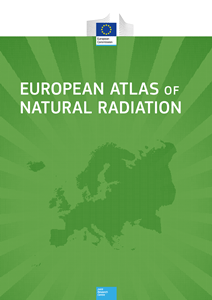Webinar: The European Atlas of Natural Radiation
This event is open to Members and Non-Members

Event Details
The human population is continuously exposed to ionizing radiation from several natural sources.
The European Atlas of Natural Radiation is intended to familiarise the public with the radioactive environment, to give a more balanced view of the annual dose that it may receive from natural radioactivity and to provide reference material and generate harmonised data for the scientific community. The overall goal of the Atlas is to estimate the annual dose that the public may receive from natural radioactivity, combining all the information from the different maps. Indeed, natural ionizing radiation is considered the largest contributor to the collective effective dose received by the world population.
The Atlas is developed and maintained by the Joint Research Centre of the European Commission.
The authors are
Giorgia Cinelli1, Marc De Cort1*, Tore Tollefsen1*, Peter Bossew2, Valeria Gruber3
1 European Commission, Joint Research Centre (JRC), Ispra, Italy; *retired
2 German Federal Office for Radiation Protection, Berlin
3 Austrian Agency for Health and Food Safety, Department for Radon and Radioecology, Linz
The human population is continuously exposed to ionizing radiation from several natural sources.
The European Atlas of Natural Radiation is intended to familiarise the public with the radioactive environment, to give a more balanced view of the annual dose that it may receive from natural radioactivity and to provide reference material and generate harmonised data for the scientific community. The overall goal of the Atlas is to estimate the annual dose that the public may receive from natural radioactivity, combining all the information from the different maps. Indeed, natural ionizing radiation is considered the largest contributor to the collective effective dose received by the world population.
The Atlas is developed and maintained by the Joint Research Centre of the European Commission.
The authors are
Giorgia Cinelli1, Marc De Cort1*, Tore Tollefsen1*, Peter Bossew2, Valeria Gruber3
1 European Commission, Joint Research Centre (JRC), Ispra, Italy; *retired
2 German Federal Office for Radiation Protection, Berlin
3 Austrian Agency for Health and Food Safety, Department for Radon and Radioecology, Linz


